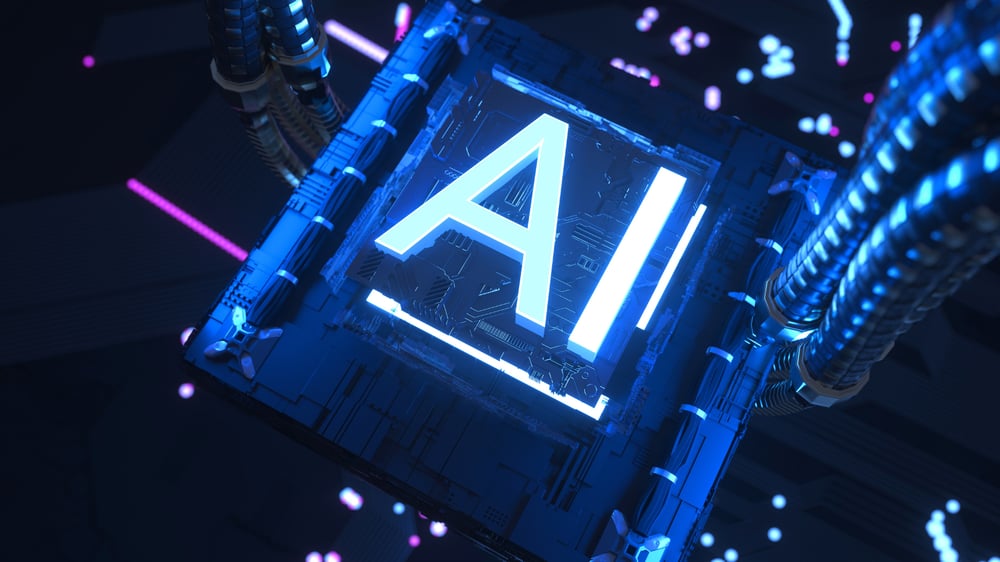Building AI-Powered Data Pipelines: A 2025 Guide for Engineers
AI Technology Data Mar 5, 2025 9:00:00 AM Ken Pomella 5 min read

Data pipelines have always been the foundation of data engineering, enabling businesses to ingest, process, and analyze massive datasets. However, as AI and machine learning (ML) become integral to decision-making, traditional data pipelines are evolving into AI-powered data pipelines that are smarter, more efficient, and increasingly automated.
In 2025, data engineers need to go beyond traditional ETL (Extract, Transform, Load) workflows and embrace AI-driven automation, real-time processing, and advanced analytics. AI-powered data pipelines can optimize data transformations, detect anomalies, automate quality checks, and accelerate ML model training—saving time and reducing human intervention.
This guide will walk you through the key components, best practices, and tools needed to build AI-powered data pipelines in 2025.
What Are AI-Powered Data Pipelines?
AI-powered data pipelines incorporate machine learning, automation, and intelligent decision-making into traditional data engineering workflows. Unlike conventional data pipelines that rely on static rules and scheduled processes, AI-powered pipelines can adapt dynamically based on real-time data trends, errors, and anomalies.
Key characteristics of AI-powered data pipelines:
- Automated Data Cleaning & Transformation: AI models detect missing values, correct inconsistencies, and optimize data formatting.
- Real-Time Anomaly Detection: AI continuously monitors data quality, flagging unexpected patterns and errors.
- Self-Optimizing Query Performance: AI improves query efficiency by automatically tuning indexing and execution plans.
- AI-Driven Data Observability: Intelligent monitoring systems predict pipeline failures and recommend fixes.
- Seamless Integration with ML Models: AI pipelines feed clean and structured data into machine learning models for real-time decision-making.
Key Components of an AI-Powered Data Pipeline
To build a robust AI-powered data pipeline, engineers must integrate AI-driven automation into each phase of the pipeline:
1. Data Ingestion with AI-Based Automation
Data pipelines start with data ingestion, where information is pulled from various sources like databases, APIs, cloud storage, and streaming platforms. AI can automate and optimize this process.
Tools & Technologies:
- AWS Glue DataBrew – Automates metadata extraction and schema inference.
- Apache NiFi – Uses AI for flow-based data ingestion.
- Fivetran & Airbyte – AI-powered connectors for automating ETL data movement.
Best Practices:
- Use AI-driven schema evolution to detect changes in data structures and prevent ingestion failures.
- Implement real-time monitoring to detect unusual patterns in incoming data.
2. Data Transformation & Quality Checks with AI
Data transformation involves cleaning, aggregating, and normalizing raw data to ensure usability for analytics and ML. AI-powered pipelines enhance this phase by automating data preparation, flagging inconsistencies, and optimizing transformation logic.
Tools & Technologies:
- Trifacta & Talend – AI-enhanced data transformation tools.
- Great Expectations – Automates data validation and quality monitoring.
- Databricks Delta Live Tables – Intelligent transformations for ML-ready data.
Best Practices:
- Train AI models on historical transformation errors to predict and suggest data corrections.
- Implement self-learning data validation rules to minimize manual intervention.
3. Real-Time Data Processing & Anomaly Detection
AI-powered data pipelines enable streaming data processing, making it possible to detect anomalies, fraud, and operational risks in real time. AI models continuously analyze incoming data and trigger alerts when irregularities occur.
Tools & Technologies:
- Apache Kafka & Apache Flink – AI-enhanced real-time data streaming.
- AWS Kinesis Data Analytics – AI-powered anomaly detection for event streams.
- Google Cloud Dataflow – Automates data processing with AI insights.
Best Practices:
- Use machine learning models to predict anomalies in transaction data.
- Implement self-healing pipelines that correct errors in real-time instead of waiting for batch updates.
4. AI-Powered Data Warehousing & Storage Optimization
AI is transforming data warehousing and storage management by optimizing query performance, storage costs, and indexing strategies. AI-powered data warehouses automatically tune performance and suggest improvements based on usage patterns.
Tools & Technologies:
- Snowflake Auto-Clustering – AI-driven query optimization.
- Google BigQuery ML – Built-in AI for automated indexing and performance tuning.
- Amazon Redshift ML – Predicts query performance bottlenecks and optimizes execution plans.
Best Practices:
- Use AI-powered data tiering to automatically move less frequently accessed data to cost-effective storage.
- Optimize partitioning and indexing dynamically based on AI-driven query analysis.
5. ML Model Integration for Predictive Analytics
AI-powered pipelines don’t just prepare data for ML—they also integrate machine learning models into real-time workflows. Predictive analytics models are embedded into pipelines to enable AI-driven decision-making.
Tools & Technologies:
- AWS SageMaker Pipelines – Automates ML workflows within data pipelines.
- Google Vertex AI Pipelines – AI-driven automation for model training and deployment.
- Kubeflow & MLflow – MLOps frameworks for managing ML models within pipelines.
Best Practices:
- Integrate AI models into streaming workflows to enable real-time decision-making.
- Deploy continuous model monitoring to detect drift and retrain models automatically.
Best Practices for Building AI-Powered Data Pipelines
To successfully implement AI-powered data pipelines, engineers should follow these best practices:
- Adopt a Modular Architecture: Design pipelines as microservices to allow AI models to be added or updated independently.
- Implement Data Governance & Compliance: Use AI-powered privacy tools to enforce security and compliance with regulations like GDPR and CCPA.
- Leverage AI for Cost Optimization: Use AI-driven insights to reduce unnecessary cloud storage and processing costs.
- Enable Observability & Monitoring: Use AI-powered observability platforms like Monte Carlo and Datadog AI to predict failures before they occur.
How to Get Started with AI-Powered Pipelines
If you’re new to AI-driven data engineering, here’s a roadmap to help you get started:
- Learn Cloud-Native ETL & Data Processing – Get hands-on experience with AWS Glue, Google Dataflow, and Apache Airflow.
- Experiment with AI-Driven Data Transformation – Use tools like Great Expectations for automated data quality monitoring.
- Build Streaming Pipelines – Implement real-time AI-powered anomaly detection with Kafka and Flink.
- Integrate ML into Data Pipelines – Deploy MLflow or SageMaker Pipelines to automate model training and deployment.
- Monitor & Optimize Pipelines with AI – Use AI-powered observability to continuously improve pipeline efficiency.
Conclusion
AI-powered data pipelines are redefining how data is processed, stored, and leveraged for analytics and machine learning. By integrating AI-driven automation, real-time analytics, and intelligent monitoring, data engineers can increase efficiency, reduce errors, and enable real-time decision-making.
As AI continues to shape the data engineering landscape, learning to build AI-enhanced data pipelines will be a critical skill in 2025. By mastering cloud-based ETL, anomaly detection, AI-driven query optimization, and MLOps integration, engineers can future-proof their careers and lead the next wave of data innovation. Now is the time to start building smarter, AI-powered data workflows.

Ken Pomella
Ken Pomella is a seasoned technologist and distinguished thought leader in artificial intelligence (AI). With a rich background in software development, Ken has made significant contributions to various sectors by designing and implementing innovative solutions that address complex challenges. His journey from a hands-on developer to an entrepreneur and AI enthusiast encapsulates a deep-seated passion for technology and its potential to drive change in business.
Ready to start your data and AI mastery journey?
Explore our courses and take the first step towards becoming a data expert.
